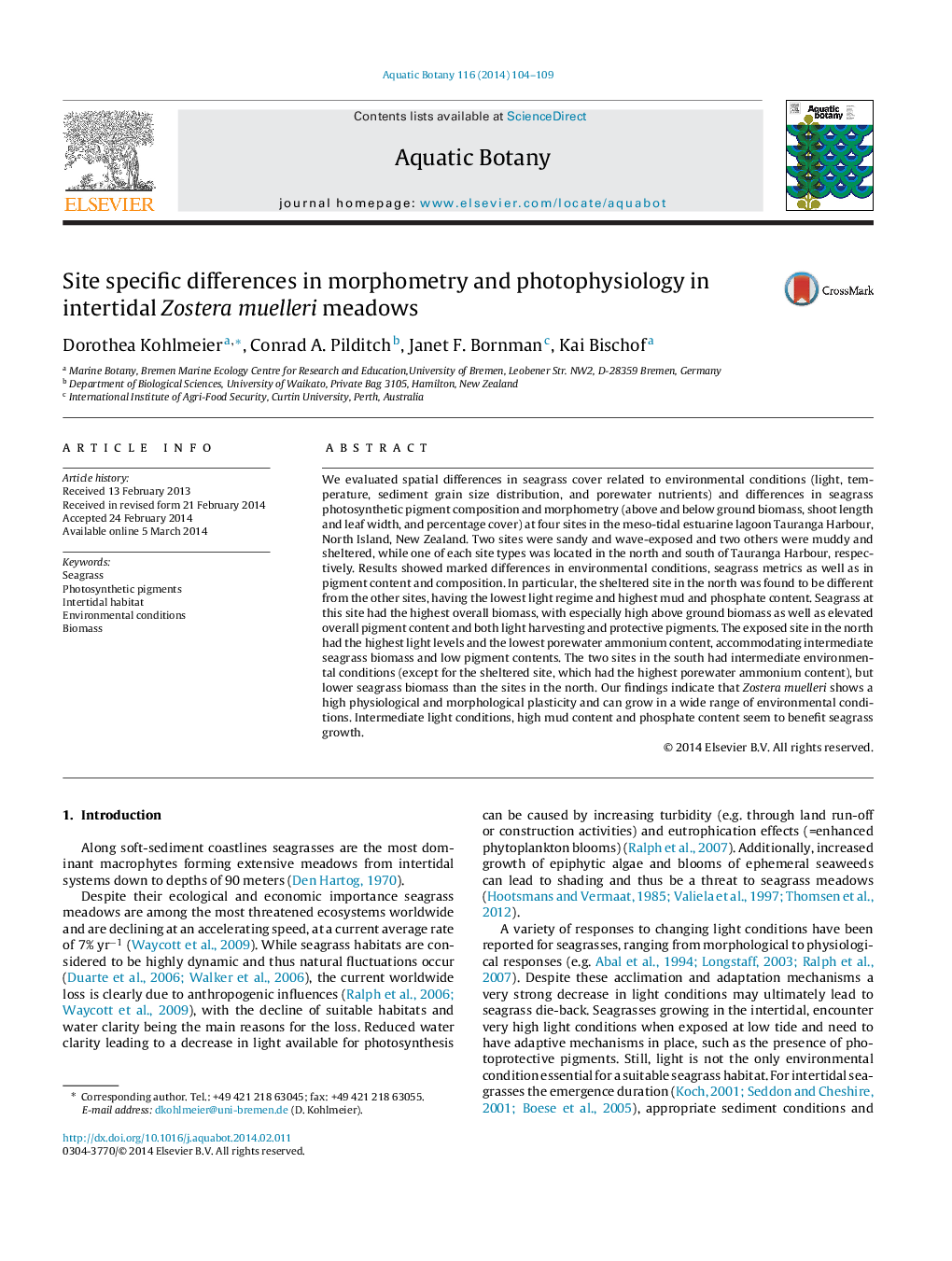| کد مقاله | کد نشریه | سال انتشار | مقاله انگلیسی | نسخه تمام متن |
|---|---|---|---|---|
| 4527785 | 1625826 | 2014 | 6 صفحه PDF | دانلود رایگان |
• We conducted a survey at different sites with contrasting sediment conditions.
• Seagrass metrics and pigment composition varied strongly with site.
• Possible interactions with environmental conditions are discussed.
• Pigment compositions reflected site characteristics.
• Zostera muelleri is well adapted to intertidal habitat through high pigment plasticity.
We evaluated spatial differences in seagrass cover related to environmental conditions (light, temperature, sediment grain size distribution, and porewater nutrients) and differences in seagrass photosynthetic pigment composition and morphometry (above and below ground biomass, shoot length and leaf width, and percentage cover) at four sites in the meso-tidal estuarine lagoon Tauranga Harbour, North Island, New Zealand. Two sites were sandy and wave-exposed and two others were muddy and sheltered, while one of each site types was located in the north and south of Tauranga Harbour, respectively. Results showed marked differences in environmental conditions, seagrass metrics as well as in pigment content and composition. In particular, the sheltered site in the north was found to be different from the other sites, having the lowest light regime and highest mud and phosphate content. Seagrass at this site had the highest overall biomass, with especially high above ground biomass as well as elevated overall pigment content and both light harvesting and protective pigments. The exposed site in the north had the highest light levels and the lowest porewater ammonium content, accommodating intermediate seagrass biomass and low pigment contents. The two sites in the south had intermediate environmental conditions (except for the sheltered site, which had the highest porewater ammonium content), but lower seagrass biomass than the sites in the north. Our findings indicate that Zostera muelleri shows a high physiological and morphological plasticity and can grow in a wide range of environmental conditions. Intermediate light conditions, high mud content and phosphate content seem to benefit seagrass growth.
Journal: Aquatic Botany - Volume 116, May 2014, Pages 104–109
